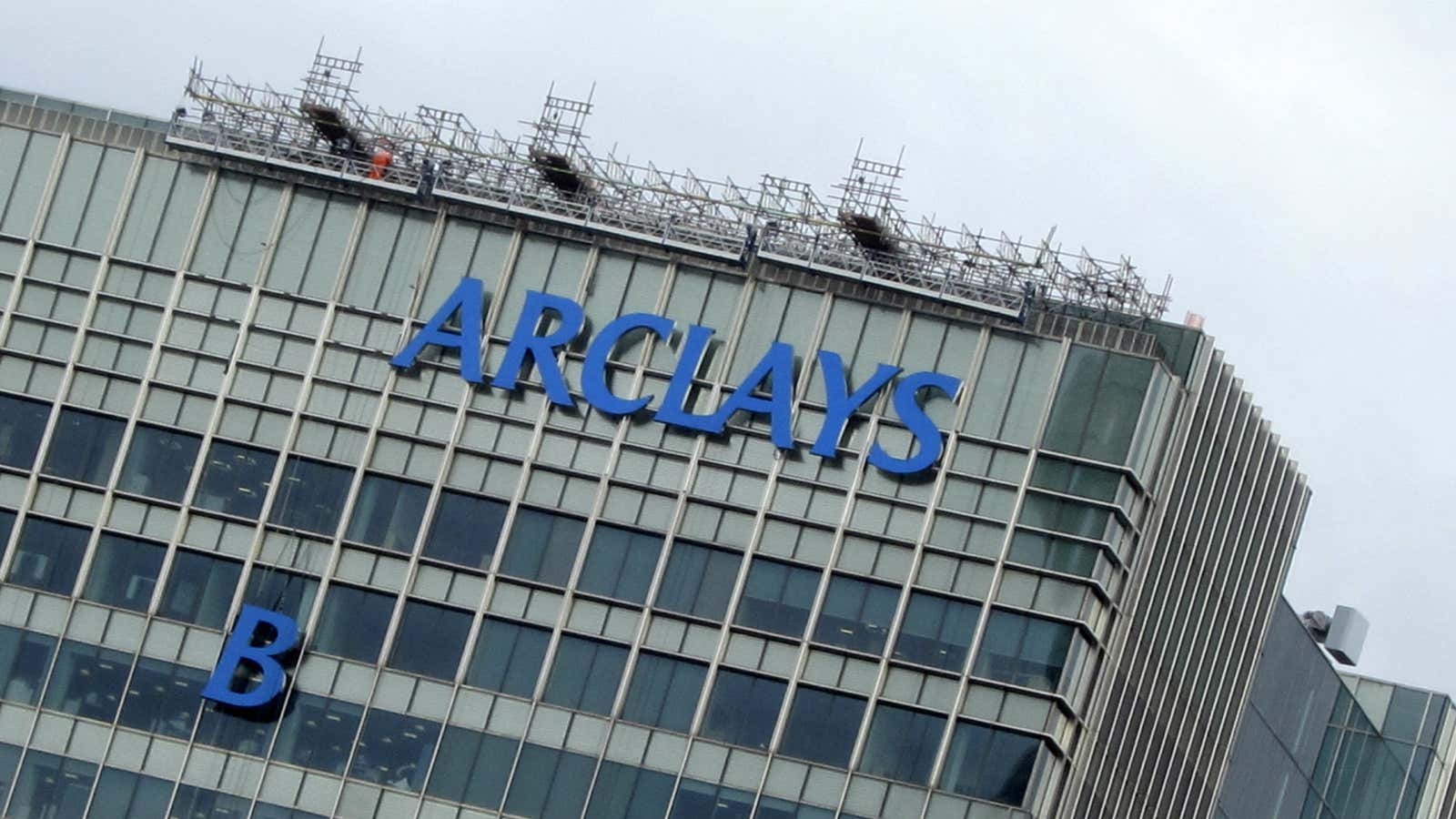Three former Barclays traders were found guilty by a jury in a British court of conspiring to manipulate Libor, a London-based international financial benchmark linked to some $300 trillion worth of mortgages, loans, and derivatives.
Jay Merchant, 45, the most senior of the traders, was convicted unanimously, while 35-year-old former Libor submitter Jonathan Mathew and former trader Alex Pabon, 38, were found guilty by a majority verdict. Peter Johnson, a senior submitter, pleaded guilty before the trial began. They will all be sentenced later this week.
The convictions bring the total number of bankers Britain has convicted over the long-running Libor-rigging scandal to five, including former UBS and Citigroup trader Tom Hayes (paywall), who was convicted last August for his role as a ringleader. He was sentenced to 14 years in prison, which was later reduced to 11. The US has convicted a similar number of people for rigging Libor (paywall), and together with Britain there are charges pending for more than a dozen others.
The verdict is a victory for Britain’s Serious Fraud Office (SFO), which has staked its reputation on prosecuting financial crime on Libor cases, which have cost big banks billions of dollars in fines and revealed reams of embarrassing chat transcripts among traders, but has resulted in very few convictions for the individuals involved. The SFO suffered a serious setback in January when six former brokers were acquitted on Libor-rigging charges. The jury also couldn’t come to a decision for two other defendants in the recent Barclays trial; the SFO has two weeks to decide whether to try them again.
The flagrant nature of the Libor manipulation—“its just amazing how libor fixing can make you that much money,” said one trader in a transcript published by regulators—stands in sharp contrast to the scant few people who have been charged for their part in the wrongdoing. The SFO says that the Barclays defendants’ wrongdoing took place some 10 years ago, between June 2005 and September 2007.
Before the financial crisis, 16 banks, including Barclays, submitted daily estimates of borrowing rates to the British Bankers’ Association, which then averaged them out to calculate that day’s Libor rate. By colluding to submit false rates, the submitters could nudge a day’s result up or down depending on what traders needed to boost a profit or reduce a loss in their portfolios (often in return for favors as small as a bottle of wine or a free lunch).
In 2012, Barclays was the first bank to settle with American and British regulators over Libor manipulation, paying a fine of more than $400 million in hopes that it would get a break for fessing up early. Instead, the bank was pilloried in the press and many executives, including then-CEO Bob Diamond, were booted.
Everything from mortgages to student loans can be linked to Libor rates, so it was big news that there was something fishy about this obscure but crucial pillar of the financial system. Similar shenanigans were uncovered in other borrowing rates, including foreign-currency exchange rates and commodity prices, which has cost every big banks dearly.
When all is said and done, big banks will have paid more than $300 billion in litigation-related charges since 2009 for manipulating markets, busting sanctions, evading taxes, mis-selling insurance, packaging toxic mortgages, and many, many other misdeeds.
